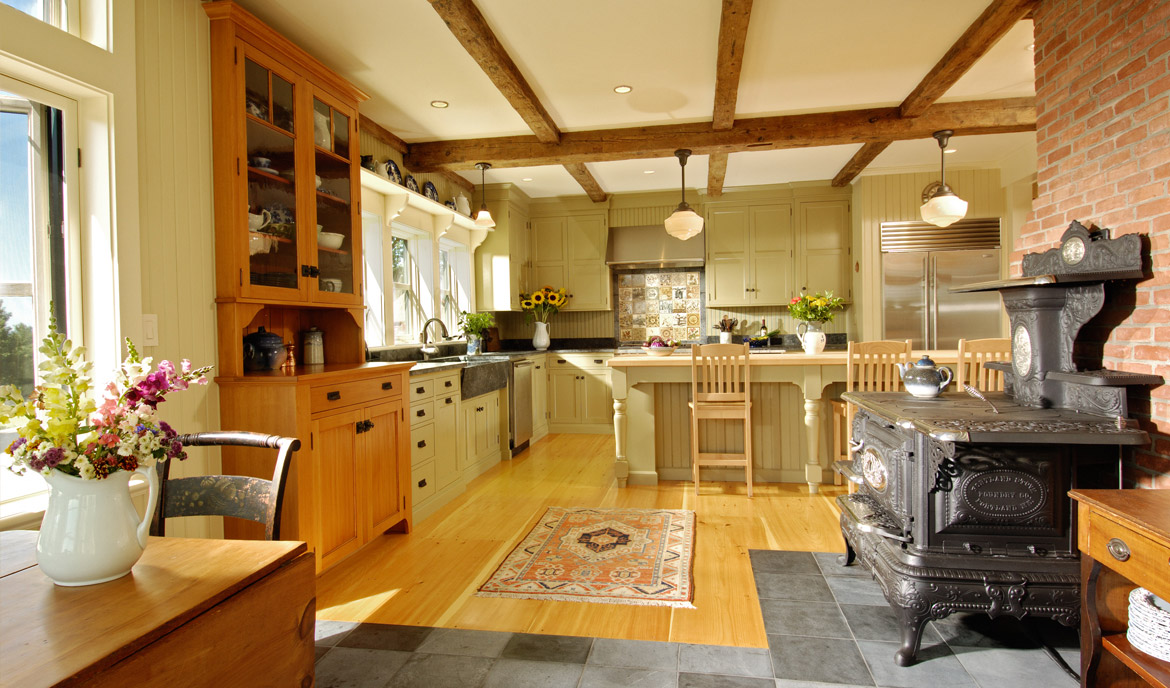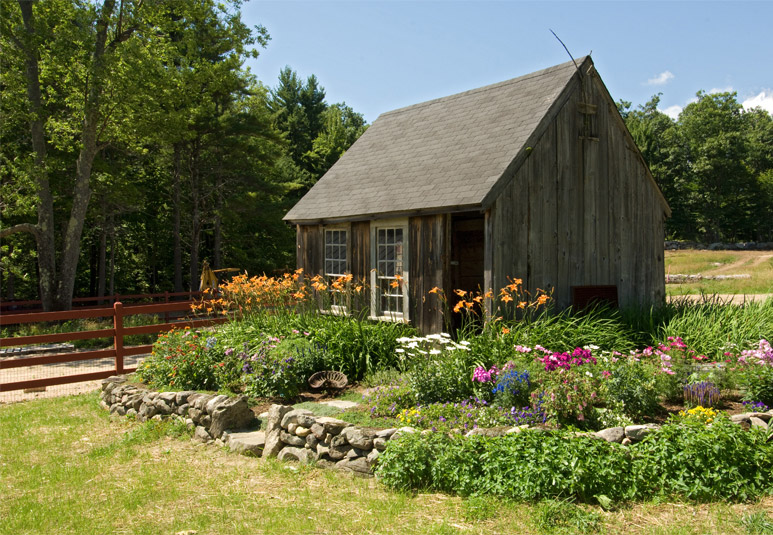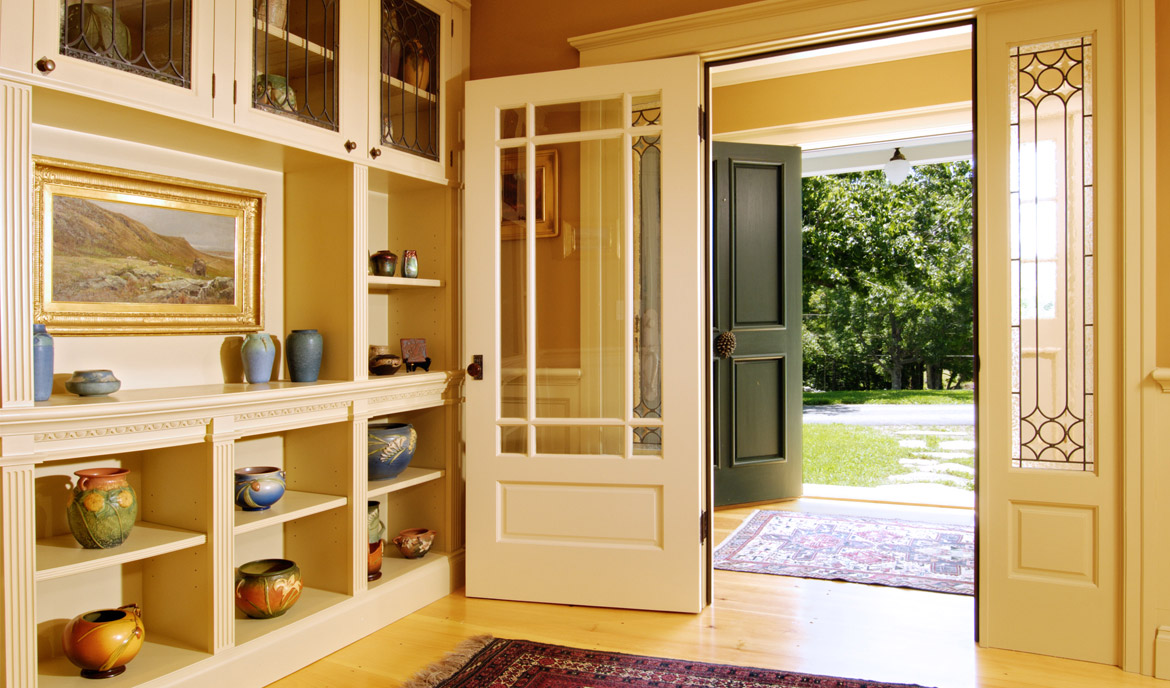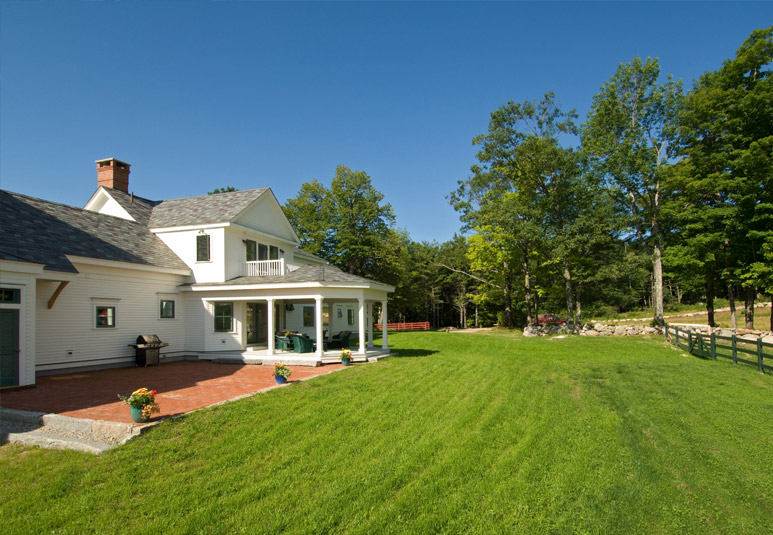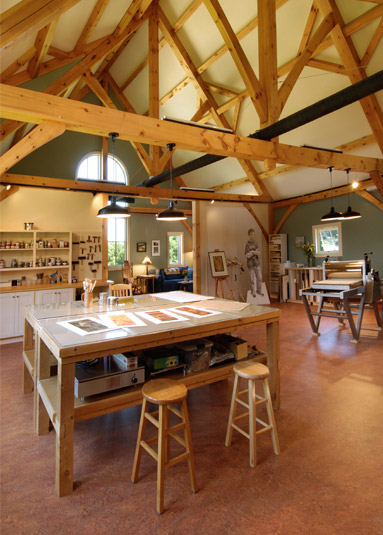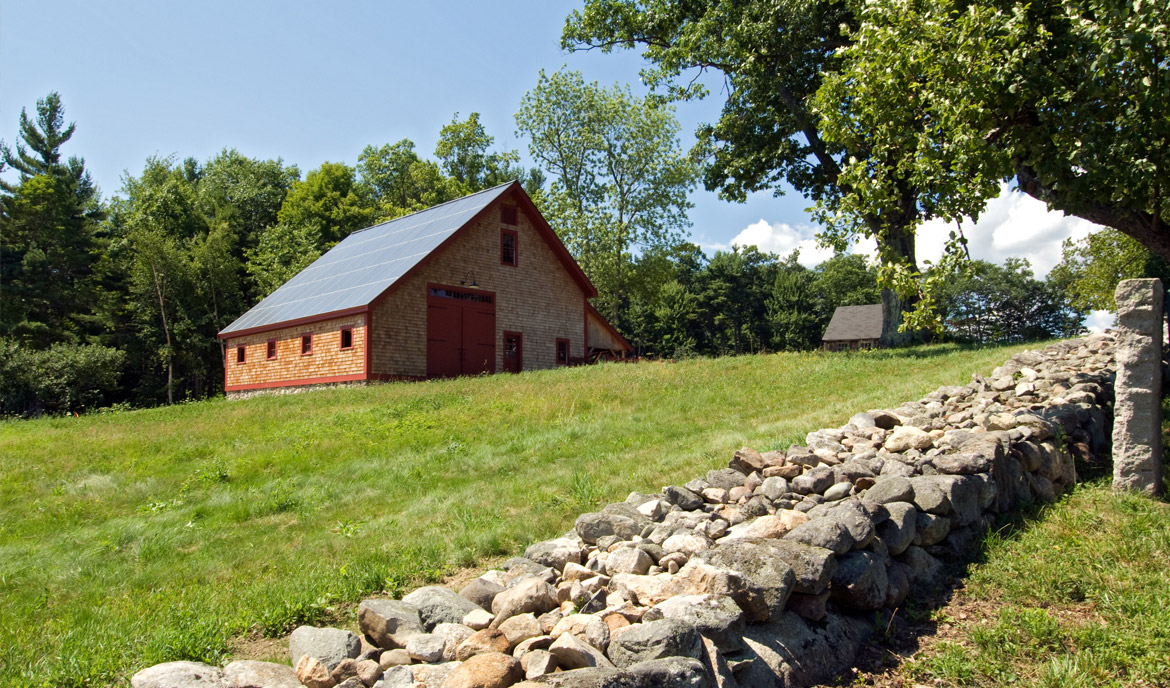Green Living
White Mountains, NH
Sited in a gentle valley with breathtaking views of New Hampshire’s Mt. Chocorua, this unique home pays homage to the farmhouse that had occupied the site since 1788 while employing…
Read More
Read Less
Sited in a gentle valley with breathtaking views of New Hampshire’s Mt. Chocorua, this unique home pays homage to the farmhouse that had occupied the site since 1788 while employing technological elements that place it firmly in the 21st century. Regretfully, the original farmhouse had deteriorated significantly and the structure could not be saved. A strong force driving the design and construction of the home was the owners’ steadfast commitment to sustainable building practices and the use of local materials and local craftsmen. The goal of the project was to integrate modern energy efficiencies into the structure while maintaining the architectural farmhouse vernacular. The home is a successful synthesis of old-world values and modern technology, executed in a thoughtful, deliberate manner that proves that green can be beautiful.
The new owners were strongly motivated by a desire to recreate a traditional farmhouse on the site and in their words, “respect the hill.” It was very important to them that the home look as though it fit into the surrounding land as though it had been there for many years. Since the old farmhouse could not be saved in its entirety, it was carefully deconstructed and as much as possible of the old materials were reused in the new home. The flooring, beams, bathtubs, soapstone sinks, backsplashes, hardware, doorknobs and granite from the old foundation all played a significant role in the new residence.
The owners envisioned the conceptual structure of the project as forming a triangle with one leg of the triangle representing sustainable design, particularly as it relates to heating and cooling; the second triangle leg composed of energy efficient design elements and the third formed by using sustainable and local building materials.
- Location: White Mountains, NH
- Historic farmhouse design
- State-of-the art heating and energy producing solar components
- Many building materials were harvested or made within 100 miles of the home
- Winner of 2008 AIANH Merit Award
- Click Here to learn about our top 10 tips for a sustainable home
Download Project Page
Sited in a gentle valley with breathtaking views of New Hampshire’s Mt. Chocorua, this unique home pays homage to the farmhouse that had occupied the site since 1788 while employing technological elements that place it firmly in the 21st century. Regretfully, the original farmhouse had deteriorated significantly and the structure could not be saved. A strong force driving the design and construction of the home was the owners’ steadfast commitment to sustainable building practices and the use of local materials and local craftsmen. The goal of the project was to integrate modern energy efficiencies into the structure while maintaining the architectural farmhouse vernacular. The home is a successful synthesis of old-world values and modern technology, executed in a thoughtful, deliberate manner that proves that green can be beautiful.
The new owners were strongly motivated by a desire to recreate a traditional farmhouse on the site and in their words, “respect the hill.” It was very important to them that the home look as though it fit into the surrounding land as though it had been there for many years. Since the old farmhouse could not be saved in its entirety, it was carefully deconstructed and as much as possible of the old materials were reused in the new home. The flooring, beams, bathtubs, soapstone sinks, backsplashes, hardware, doorknobs and granite from the old foundation all played a significant role in the new residence.
The owners envisioned the conceptual structure of the project as forming a triangle with one leg of the triangle representing sustainable design, particularly as it relates to heating and cooling; the second triangle leg composed of energy efficient design elements and the third formed by using sustainable and local building materials.

